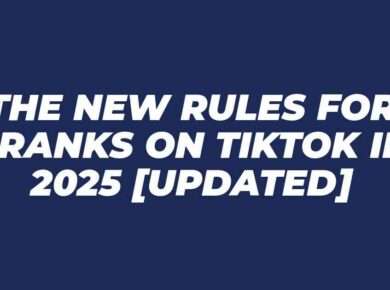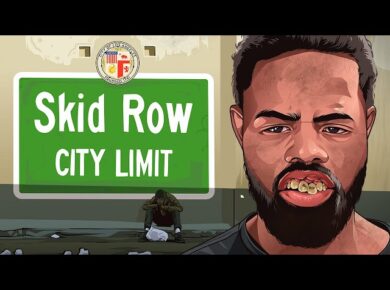Understanding the return on investment (ROI) in influencer campaigns is critical for marketers aiming to maximize their budgets. While influencer marketing continues to gain traction as an effective strategy, many still struggle to quantify its success. Failure to track ROI often stems from unclear objectives, inconsistent metrics, and insufficient tools to measure outcomes. In this guide, we’ll break down the process of measuring ROI in influencer campaigns, offering practical insights that will help you make data-driven decisions and optimize your marketing strategies.
Understanding ROI in Influencer Marketing Campaigns
When investing in influencer marketing, understanding your return on investment (ROI) isn’t just a “nice to have”—it’s essential. ROI is the backbone of determining whether your campaign is effective, sustainable, and worth replicating. Let’s break it down step by step to help you measure and make sense of ROI in your influencer strategy.
What is ROI?
At its core, ROI (Return on Investment) quantifies the profitability of an activity. It’s calculated using a simple formula:
ROI (%) = [(Profit – Cost) ÷ Cost] × 100
When applied to influencer marketing, the “Profit” can include metrics like increased sales, lead conversions, or even long-term customer retention directly tied to the campaign. The “Cost” includes influencer fees, product giveaways, and production costs.
For example, imagine you’ve spent $5,000 on an influencer campaign that generated $20,000 in sales. Here’s how that looks:
- Profit = $20,000 – $5,000 = $15,000
- ROI = ($15,000 ÷ $5,000) × 100 = 300%
This means that for every dollar spent, you earned three dollars in return. Metrics don’t stop at sales, either. Campaigns focusing on brand awareness or audience engagement might calculate ROI differently, perhaps using impressions or engagement rates. For a more detailed breakdown, consider frameworks like those discussed in Sprout Social’s guide.
 Photo by Lukas
Photo by Lukas
Why ROI Matters for Influencer Marketing
Understanding ROI goes beyond just crunching numbers. It’s the key to ensuring your influencer marketing strategy remains impactful and efficient. Here are three main reasons why ROI measurement matters:
- Justify Marketing Budgets
Allocating funds for marketing campaigns always comes with accountability. ROI demonstrates the tangible value an influencer partnership brings, providing the data needed to back up your budget decisions to stakeholders or executives. No more guesswork—proof is in the results. - Improve Campaign Strategies
Calculating ROI helps you identify what’s working and what isn’t. For example, you can analyze which type of influencer content is driving the best results or which platform is delivering more conversions. With this data, optimizing future strategies becomes a science rather than a gamble. Check out Aspire’s take for actionable insights. - Set Performance Benchmarks
Benchmarking allows you to measure campaigns against one another, guiding KPIs for future efforts. It’s not just about one-off successes; ROI provides a framework to define realistic goals and track ongoing progress. This comparison lays the groundwork for building stronger, more effective campaigns over time.
Understanding the importance of ROI in influencer campaigns is critical to crafting a marketing strategy that truly delivers. For a deeper dive into advanced strategies, Grin’s guide provides a valuable perspective on extending ROI measurements.
Key Metrics for Measuring ROI in Influencer Campaigns
Measuring return on investment (ROI) in influencer campaigns can feel overwhelming at first, especially with the variety of metrics available to track. Each campaign has unique goals, so selecting the right metrics is key to understanding its performance. In this section, let’s break down core metrics into four categories to help you analyze your influencer-driven marketing efforts effectively.
Conversion Metrics
Conversions are often the most direct indicators of a campaign’s ROI. These metrics show how well influencers are driving specific actions that align with your campaign goals, such as sales or sign-ups. Here are some crucial conversion metrics to monitor:
- Affiliate Link Clicks: Unique tracking URLs help you measure how many users clicked through to your website from an influencer’s content.
- Personalized Voucher Codes: Assigning influencers discount codes specific to their followers lets you correlate purchases directly to their promotions.
- ROAS (Return on Ad Spend): Calculate the revenue generated by paid influencer campaigns relative to the ad spend. This tells you whether you’re getting value for your investment.
- Customer Lifetime Value (CLTV): Go beyond short-term gains by evaluating the long-term revenue customers generate after being acquired through influencer campaigns.
For example, if a campaign with a $2,500 budget drives $10,000 in purchases, your ROAS would be an impressive 400%. Utilizing tools like Shopify or Google Analytics can simplify tracking these numbers.
Engagement Metrics
Engagement metrics are perfect for judging how effectively influencers connect with their audiences. These figures are particularly beneficial for campaigns focusing on fostering relationships rather than immediate sales. Key metrics include:
- Likes: A quick signal of how well the content resonates with the audience.
- Shares: Indicate how motivated followers are to spread the content further.
- Comments: A reflection of how deeply the audience is engaging with the message. For instance, detailed or meaningful comments may signal a stronger connection.
- Click-Through Rates (CTR): Measure the percentage of viewers who clicked on a link embedded in the influencer’s post or bio.
High engagement levels often correlate with strong campaign performance. Still, it’s essential to ensure this engagement aligns with your brand’s goals. Platforms like Aspire’s guide to influencer ROI explain how combining engagement and sales metrics can paint a fuller picture.

Photo by Plann
Brand Awareness and Reach
If your main objective is to grow visibility, these metrics help you gauge how many people noticed your campaign and how far your message traveled.
- Impressions: Track how many times your content was displayed on users’ screens.
- Follower Growth: Keep an eye on how many new followers your brand gains during and after the campaign.
- Total Reach: Calculate the unique number of users who viewed the influencer-generated content.
- CPM (Cost Per Thousand Impressions): A valuable metric to determine how cost-effective your campaign’s reach was.
Combining these metrics gives you a clearer image of whether your branding goals are being met. Campaign tracking platforms like Meltwater offer insights into measuring these metrics effectively.
Content Metrics
Beyond numbers, the quality and utility of the content produced by influencers should also be evaluated. Repurposing influencer-generated content (UGC) adds long-term value to your campaign by extending its impact across different marketing channels.
- UGC Reuse in Paid Ads: Does the influencer’s content perform well in your ad campaigns?
- Organic Channel Integration: Are you using influencer content effectively on your social media or blog?
- Owned Media Utilization: How often can the content be incorporated into your website, newsletters, or email campaigns?
Effective UGC not only helps you save on content production costs but also ensures a cohesive brand image. Some marketers even evaluate how UGC impacts metrics like time-on-page or bounce rates when used on websites.
By monitoring these key metrics, you can fine-tune your influencer strategies and maximize the return on investment for future campaigns.
Steps to Effectively Measure ROI in Influencer Campaigns
Measuring the return on investment (ROI) for influencer marketing campaigns can feel like navigating a maze without a map. With so many variables at play, from engagement metrics to conversions, having a structured approach is crucial. By following these steps, you can make data-driven decisions that ensure your campaigns not only meet but exceed expectations.
Set Clear Objectives
Your goals are the foundation of a successful influencer campaign. Without clear objectives, it’s like trying to hit a moving target. Start by defining specific, measurable, achievable, relevant, and time-bound (SMART) goals.
Ask yourself questions such as:
- Are you aiming to raise brand awareness, increase sales, or drive website traffic?
- How will you quantify success?
Setting clear objectives ensures that every action taken aligns with your overall marketing strategy. For example, a campaign focused on brand awareness might prioritize metrics like reach and impressions, while a sales-heavy campaign should concentrate on conversions. Clear objectives not only streamline execution but also simplify ROI measurement down the line. Aspire’s guide to influencer ROI provides insights into how goal-setting directly impacts ROI tracking.
Choose Appropriate Tools
Choosing the right tools is vital for monitoring and analyzing influencer campaign performance. Here are three excellent platforms to consider:
- Traackr
Traackr specializes in influencer discovery, evaluation, and campaign management. This platform offers tools for tracking performance metrics and analyzing ROI across multiple campaigns. - GRIN
Known for its end-to-end campaign management features, GRIN integrates seamlessly with e-commerce platforms. It also lets you track affiliate sales, engagement, and content performance all in one place. Learn more about its capabilities here. - Influencer Hero
This tool stands out for its real-time data and analytics dashboards, helping you track key metrics like reach, conversions, and ROI. Its user-friendly interface makes it a favorite among smaller teams looking for impactful insights.
Each tool has unique strengths; the key is to choose the one that aligns with your campaign’s goals and budget.
Track the Right Data Points
To measure ROI accurately, it’s essential to focus on metrics that align with your objectives. But which data points should you prioritize? Here’s a breakdown:
- Engagement Metrics: Likes, shares, and comments help you gauge how well the content resonates with the audience.
- Conversion Data: Metrics like sales, downloads, or sign-ups provide a direct link between the campaign and your bottom line.
- Reach and Impressions: Essential for brand awareness campaigns, these metrics show how many people viewed your content.
- Cost Metrics: Calculate total campaign costs, including influencer fees, production, and ad spend.
Tracking relevant data ensures that your calculations are based on insights that genuinely reflect the campaign’s impact. For a deeper dive into metrics selection, Forbes outlines 16 smart ways to measure influencer ROI.
Analyze and Report Results
The final step is to convert your tracked data into actionable insights. Start by compiling a report that highlights the campaign’s key findings. Here’s how to approach it:
- Summarize Results: Clearly outline performance metrics that match your objectives, such as ROAS, engagement rates, and customer acquisition costs.
- Compare Against Benchmarks: Evaluate how results align with industry standards or past campaigns.
- Identify Patterns: Look for trends that indicate what worked and what didn’t.
- Offer Recommendations: Use the data to suggest tweaks for future efforts, such as collaborating with different influencer types or focusing on high-performing content formats.
Effective reporting turns raw data into a roadmap for improvement, helping you make smarter marketing choices moving forward. For additional reporting techniques, consider reviewing Sprout Social’s framework on maximizing influencer marketing ROI.
By setting objectives, choosing the right tools, and analyzing data carefully, measuring ROI in influencer campaigns becomes a straightforward and valuable process. Each step builds upon the other, creating a system that takes the guesswork out of influencer marketing.
Maximizing ROI in Influencer Marketing
Maximizing your return on investment (ROI) in influencer marketing isn’t about spending more—it’s about spending smarter. By focusing on key strategies that prioritize relevance, authentic connections, and strategic partnerships, brands can achieve a higher ROI while fostering lasting value. Let’s explore actionable ways to get the most out of your influencer campaigns.
Align Influencer Selection with Campaign Goals
Choosing the right influencer is like picking a partner for a dance—it only works if you’re in sync. To ensure your campaign aligns perfectly, consider these key factors when selecting an influencer:
- Audience Relevance: Collaborate with influencers whose audience closely matches your ideal customer. This ensures your message reaches those most likely to engage and convert.
- Authenticity: Look for influencers who naturally align with your brand’s values and image. Followers can spot inauthentic endorsements a mile away, so genuine connections matter.
- Performance History: Review an influencer’s past campaigns. Do they frequently generate high engagement and quality content? Use data to validate their impact in similar niches.
By prioritizing these elements, you can unlock partnerships that deliver measurable results. For more insights on influencer selection, check out Storyclash’s guide.
Optimize Campaign Costs
Did you know that the costliest influencers aren’t always the most effective? Managing your campaign budget wisely can lead to better results with lower investment. Here’s how:
- Focus on High-Performing Influencers: Use historical performance metrics to identify influencers who consistently deliver higher engagement or conversions.
- Renegotiate Rates: Don’t hesitate to negotiate influencer fees. Offer longer-term partnerships or mutually beneficial agreements as leverage.
- Choose Micro-Influencers: These influencers often have higher engagement rates and more affordable fees compared to large-scale creators.
Efficient cost management ensures every dollar works its hardest, driving better ROI. For further tips, visit Influencity’s best practices on high ROI campaigns.
Leverage User-Generated Content
Ever thought of reusing influencer-generated content (UGC) beyond the campaign? UGC can be a goldmine for your brand’s broader marketing strategy. Here’s why:
- Cost Savings: Repurposing UGC in social ads, email campaigns, or website content is far cheaper than creating professional assets from scratch.
- Enhanced Credibility: Consumer trust in recommendations from actual users is much higher than in branded ads. UGC adds a relatable human element to your messaging.
- Extended Shelf Life: Incorporating UGC into various platforms ensures the impact of a single campaign lasts far longer than its original run.
By leveraging UGC, you’re not just maximizing the influencer’s contribution but ensuring the content enriches your marketing efforts in multiple ways.

Photo by RDNE Stock project
Engage Top-Performing Influencers
Building lasting relationships with influencers can be the key to sustained success. Instead of a “one-and-done” approach, consider nurturing long-term collaborations with your top collaborators.
- Consistency Builds Trust: When followers see consistent endorsements over time, they’re more likely to view them as authentic, increasing conversions.
- Reduced Costs: Long-term partnerships often come at discounted rates, benefiting both parties in the long run.
- Stronger Brand Advocacy: Loyal influencers evolve into passionate brand ambassadors, amplifying your voice beyond individual campaigns.
By valuing and investing in top-performing influencers, you create partnerships that are mutually beneficial and strategically profitable. Read more on influencer marketing strategies from The Cirqle’s tips on maximizing ROI.
By following these targeted strategies, brands can consistently extract higher value from influencer campaigns while cultivating impactful marketing ecosystems.
Conclusion
Understanding and measuring ROI in influencer campaigns is essential for sustaining success in today’s marketing environment. By focusing on clear objectives, relevant metrics, and strategic tools, businesses can transform influencer partnerships into meaningful results.
Accurate ROI tracking not only justifies budgets but also guides future strategies, helping brands identify what works best. With consistent monitoring and thoughtful analysis, you’ll ensure your campaigns continuously improve and resonate with your target audience.
For further guidance on influencer marketing, explore our insights on Blackpink’s marketing campaigns and their effectiveness in brand collaborations. Stay committed to data-driven decisions to unlock the full potential of your influencer efforts.









